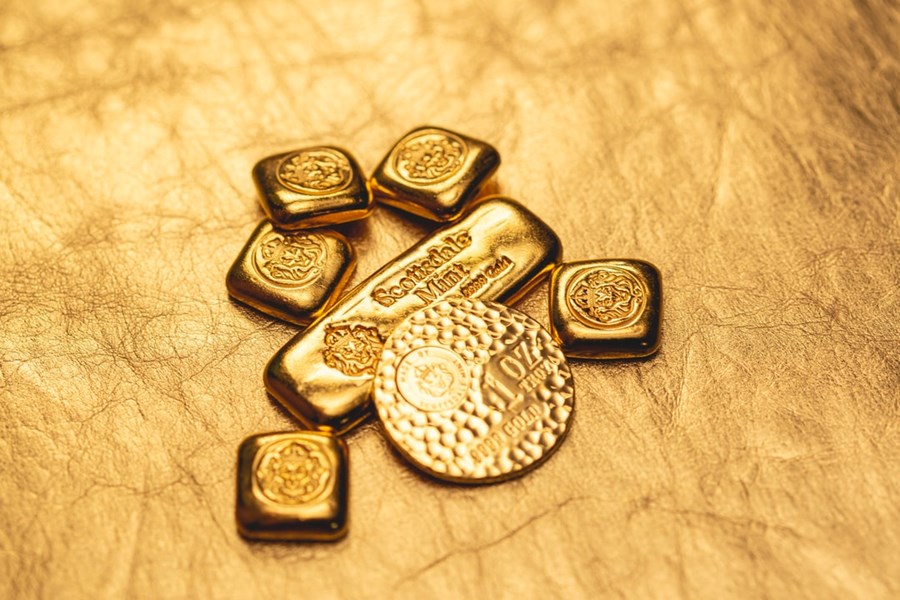
We’ve heard a lot about gold lately as it hits $2000 for an ounce!
In this piece, we share our thoughts on the role of gold in a portfolio, how/where is gold used and ways to gain exposure.
Role of gold in a portfolio
As we have seen in the past year, gold serves as a hedge against inflation, as a safe haven asset during times of elevated market volatility and plays its part in a diversified investment portfolio.
With Russia’s invasion of Ukraine that started on Feb 24, 2022, we have seen gold rally from $1800+ to now over $2000/oz. During the earlier days of Covid-19 pandemic, gold has trended higher when a new variant is discovered.
Gold plays an irreplaceable role in protecting portfolios over the long term. Gold has a 7.5% allocation in Ray Dalio’s All Weather Portfolio, which is modeled after the All Weather Fund at Bridgewater but constructed using ETFs.
Adding a gold overlay to a traditional 60/40 portfolio led to better outcomes, particularly during periods where equities lost ground. Gold features in Syfe’s Core Growth, Balanced and Defensive portfolios – making up 5% to 10% of the portfolio.
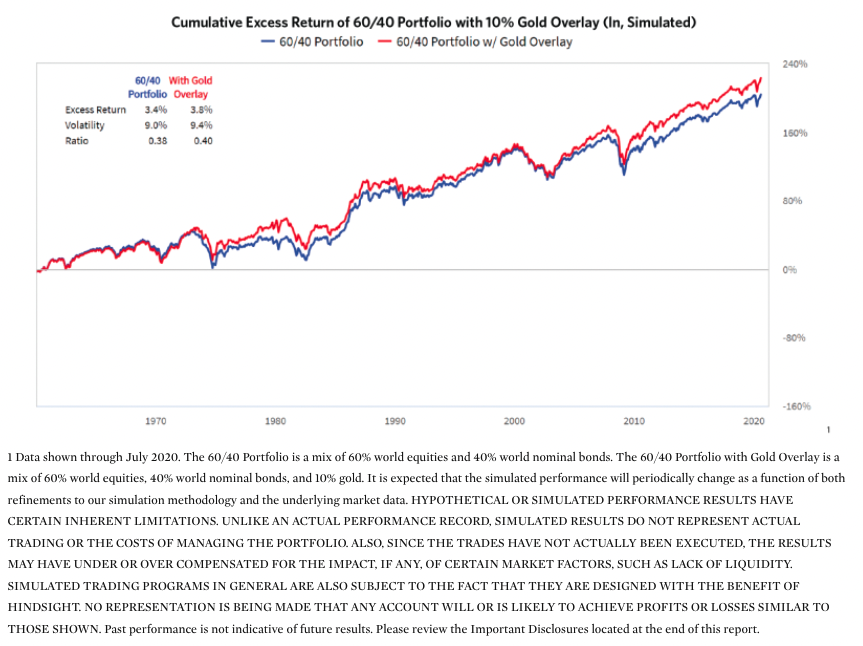
Who holds gold?
Central banks used to hold a significant allocation of gold (as a % of total reserves) – up to 70% in the 1980s, but have reduced it over time. Post Great Financial Crisis (GFC), gold holdings picked up again.
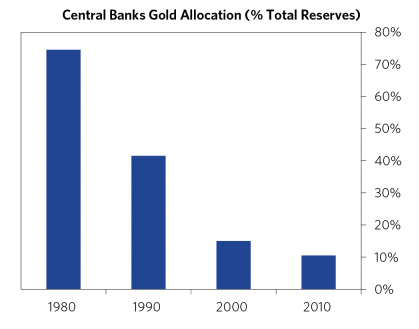
In the last ten years, countries like Russia and China have stockpiled more gold as they move to de-dollarize and diversify their economies and foreign reserves.
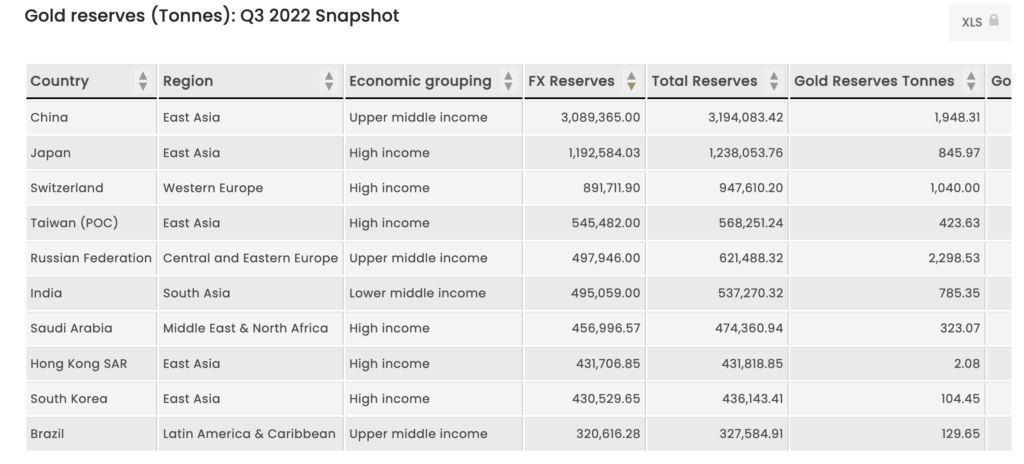
10 countries with the largest gold reserves:
No surprises that China is first, but Russia ranks fifth and Singapore is eleventh.
Why does Singapore have gold reserves?
Singapore added to its gold reserves in 2021. Having gold as part of official reserves is part of “continuous and ongoing efforts by MAS to ensure that the official foreign reserves (OFR) portfolio remains well-diversified and resilient through economic and market conditions”.
Is now the time to hold gold?
Gold prices trend higher along with inflation and during flights to safety. Last October, when we saw price increases more broadly, and the Fed stopped calling inflation “transitory”, Gold jumped above $1860 briefly before retreating on expectations of a more hawkish Fed. Now, with war on Europe’s border, gold has pushed past $2000.
As policy guidance from the Fed turns less dovish and the market prepares for at least four rate hikes leading to higher nominal yields, the sentiment around gold could turn more bearish.
The outlook for Gold longer term is dependent on the level of real yield (nominal yield – inflation). Gold is a risk-free and yield-less asset. As the value of another risk-free and low yield asset (US Treasuries) increases, the opportunity cost of holding gold increases too and this makes an investment in gold seem less attractive.
Historically, we have seen Gold and US 10-Year Treasury real yields track each other very closely. According to JP Morgan analysts, the close historical relationship between gold and US real yields implies around a $3/oz decline in gold prices for every 1bp rise in US 10-yr real yields. Moreover, their model holds over the last 15 years across multiple economic cycles.
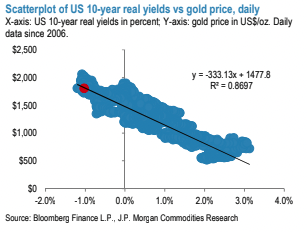
To summarize:
| Gold Heading Higher | Gold Heading Lower |
| Elevated geopolitical risk | Rate hikes – higher real yields on US Treasuries |
| Higher than expected headline inflation |
How to get exposure to Gold?
Gold bars (through ETFs), mining stocks and futures are the main ways of getting exposure to the asset class. Institutional investors have relied on ETFs as a relatively frictionless way to gain exposure quickly and efficiently. Of course, one can also buy physical gold through bars, coins and jewelry.
We will start with physical gold. Physical gold ownership is the most direct way of accessing the market but it involves costs such as storage, insurance costs, transactions fees as well as markups when investors buy and sell, particularly for small lots.
Physical Gold
ETFs allow investors access to gold while lowering some of these costs. SPDR Gold Shares (GLD) is the largest physically backed gold exchange traded fund (ETF) in the world. This offers a secure and relatively cost efficient way to access the gold market. The ETF takes care of the logistics of buying, storing and insuring gold. When you hold this, you will be essentially holding fractional ownership of the gold bullion in the fund. Physical gold ETFs tend to track the spot price of gold closely.
The expense ratio of GLD is 0.40%.
Gold Futures
Next, we have futures, where investors can gain exposure to gold without investing in physical gold. Futures are contracts where parties agree to buy and sell an asset in the future for a predetermined price. For the same dollar amount, investors will gain greater exposure to gold in a gold futures ETF than a physical gold ETF. This also applies to potential gains and losses.
Gold Mining Companies
Physical gold does not generate a cash flow but gold miners do.
Shares of gold mining companies can benefit not just from rising gold prices but also production growth. Gold miners can use the cash flow from producing gold to make further investments into their operations. On the flipside, rising costs and the mismanagement of mining operations are some factors that can cause gold miners to underperform.
VanEck Gold Miners ETF (GDX) gives investors exposure to gold mining companies. The fund is invested in the world’s largest gold miners such as Newmont, Barrick Gold, and Franco-Nevada.
GDX has an expense ratio of 0.50%.






You must be logged in to post a comment.